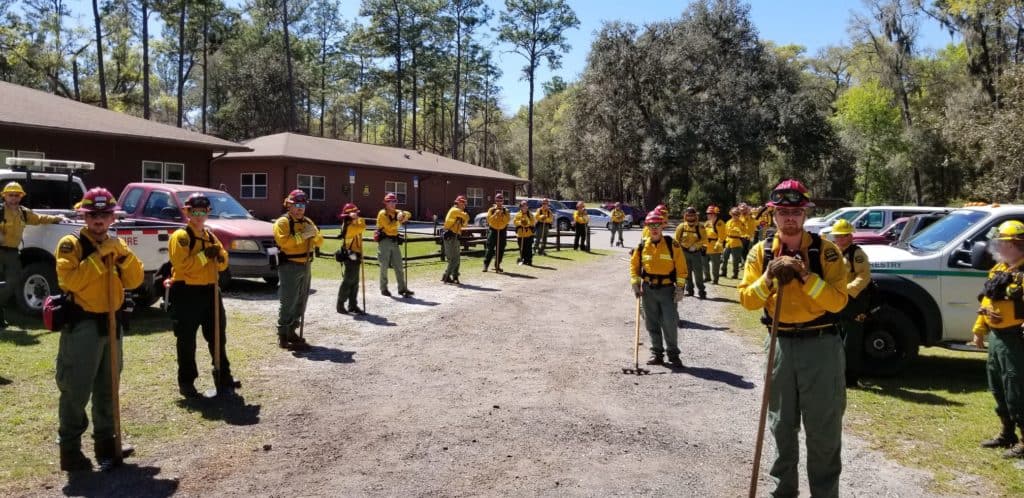
Wildfires have already broken out in Texas and Florida, and agencies are scrambling to finish plans for a new approach. They are considering waivers for some training requirements to previously-certified crew members, and moving some training online.
Other proposals include limiting fire engines to a driver and one passenger, requiring other crew members to ride in additional vehicles. They may scrap the normal campsite catering tents in favor of military-issue MREs, or “Meals Ready to Eat” to reduce touching serving utensils.
Federal resources for firefighting efforts may be more scarce, leaving states to deal with more fires.
In light of the “unprecedented challenge” of the pandemic, Forest Service resources will be used “only when there is a reasonable expectation of success in protecting life and critical property and infrastructure,” says Forest Service Chief Victoria Christiansen.
Meanwhile, here’s a link to a current press release by Region 2 that involves both recreation and fire safety (I just quoted the recreation safety, but here is a link to the entire press release).
“While we know that going outside provides forest and grassland visitors needed space, exercise and satisfaction, we are taking the risks presented by COVID-19 seriously,” said Eberlien. “We are providing some recreation opportunities where we can while protecting and keeping employees, the public and our communities safe from the virus, as well as protecting and keeping communities and natural and cultural resources safe from unwanted human-caused wildfires.”
Recreation Closures
Developed recreation sites are temporarily closed while dispersed camping, hiking and river uses are allowed, although discouraged. Closed developed recreation sites include campgrounds, day-use areas, picnic areas, and any other constructed facility amenities – such as potable water stations, fire rings/grills, picnic tables, restroom facilities with flush or vaulted toilets, and trashcans and trash collection services. Parking facilities, trails and trailheads remain open. Dispersed camping includes camping on a national forest or grassland where recreation facilities or services are not provided.
Forest and grassland visitors camping in dispersed recreation sites, hiking or embarking on river activities are
encouraged to adhere to the following safety and responsibility guidelines.
• Stay close to home to keep other communities safe.
• Stay 6 feet apart from others.
• Avoid crowding in parking lots, trails, scenic overlooks and other areas.
• Take CDC precautions to prevent illnesses like COVID-19.
• Prepare for limited or no services, such as restroom facilities and garbage collection.
• Prepare to pack out trash and human waste.
I wonder whether all Regions are taking the same approach? FWIW, the people I observed last week at an uncrowded Forest Service trail (all ten or so we saw in four hours) appeared to be following the precautions.